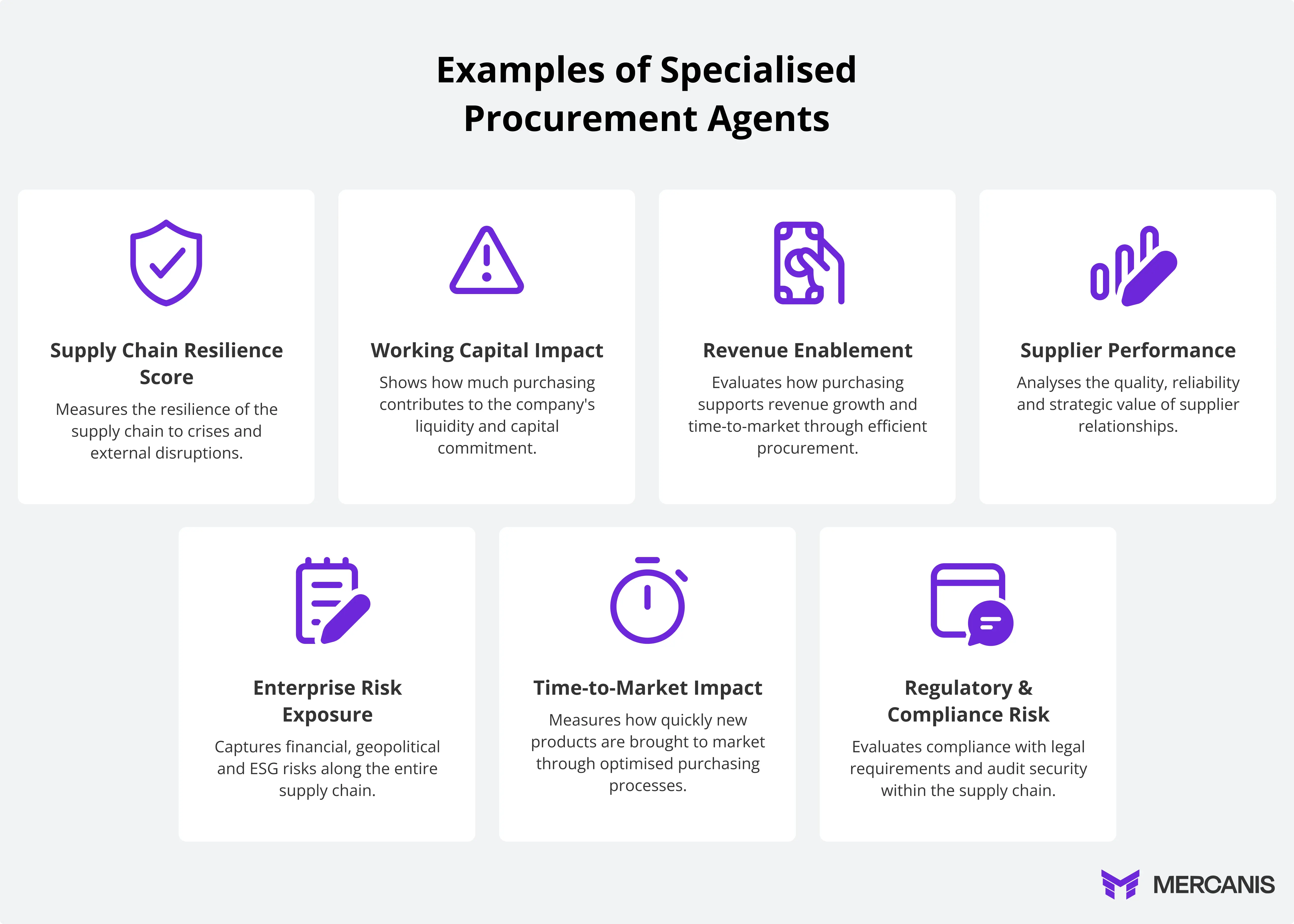
For many years, a simple mantra applied in purchasing: those who save, win. Cost savings were the key currency with which chief procurement officers (CPOs) measured their success and justified their role in the company and within the purchasing organization. But times have changed fundamentally, and many purchasing managers have not yet fully embraced this change.
In modern organizations, it is no longer enough to rely solely on traditional savings to be heard and taken seriously in the boardroom. Procurement must strategically reposition itself as a driver of efficiency, resilience, and growth. Efficiency is a key goal for any high-performing procurement organization: only through targeted strategic management, automation, and continuous process optimization can organizations sustainably increase their procurement performance and ensure the success of the company.
Early on in our collaboration with procurement teams, it became clear that focusing solely on cost reduction is not enough. Analyses of numerous board presentations and CPO pitches reveal a clear misunderstanding between what purchasing organizations present and what decision-makers are actually interested in.
While many CPOs proudly highlight their savings rates, board members have long been concerned with more strategic issues that go far beyond traditional KPIs. Proper decision-making in the boardroom depends largely on selecting the right KPIs and answering the crucial question of which metrics are truly relevant. Modern metrics play a central role in this.
Reality clearly shows that cost savings now rank only seventh among the metrics that are relevant to boards. Instead, topics such as efficiency, resilience, growth, and compliance are taking center stage. Procurement leaders must understand these priorities and focus on new metrics in order to anchor the purchasing function as a strategic value driver in the company.

Risk management along the entire supply chain is becoming a decisive factor for stability and business continuity. Maintaining strong supplier relationships and effective risk management help to identify risks early on and strengthen the resilience of the organization. Procurement leaders and industry leaders, for example, rely on specific metrics such as the number of emergency orders or compliance rates to measure and improve resilience.
A positive impact on working capital strengthens the company's financial flexibility. Optimizing procurement costs, procurement spend, and total cost of ownership is crucial to improving working capital in the long term and realizing savings opportunities.
Procurement is becoming a growth driver that accelerates innovation and enables market entry. Customer satisfaction and customer experience are key factors in fully exploiting revenue potential and ensuring the company's competitiveness.
Compliance and proactive risk management are becoming core tasks of the procurement function. Strong supplier relationships and comprehensive risk management are essential for minimizing risks in the supply chain and achieving the organization's business objectives.
Shortening cycle times through automation and process intelligence is a key lever for competitiveness. Metrics for measuring and improving processes such as the purchasing process, procurement performance, procurement activities, and procurement KPIs are crucial for reducing time and costs. Companies should focus on sourcing activities, supplier performance, purchase orders, and emergency orders, as optimizing these processes has a direct impact on time-to-market. The procurement team and the organization must continuously identify savings opportunities and implement cost-cutting measures to create value for the company.
Compliance with laws such as the Supply Chain Due Diligence Act (LkSG) is essential – a high compliance rate becomes a strategic success factor, as high compliance rates ensure adherence to contracts and guidelines, thus helping to avoid legal risks, delays, and errors in the procurement process.
The defect rate, i.e., the error rate in deliveries, and the number of emergency orders are important metrics for evaluating and specifically improving the quality and reliability of suppliers.
The procurement team, the organization, and the company play a central role in managing and optimizing KPIs. Procurement and procurement activities must be strategically aligned to achieve business objectives and create sustainable value.
In today's economy, supplier performance and the strength of the supplier network are critical success factors for any company. Procurement teams that focus specifically on supplier performance not only give their company a competitive advantage, but also ensure the resilience and efficiency of the entire supply chain.
By consistently measuring supplier performance KPIs, such as delivery reliability, quality standards, or compliance rates, companies gain a clear overview of their suppliers' strengths and weaknesses. A high compliance rate is not only a sign of adherence to contracts and regulatory requirements, but also minimizes risks such as delivery delays, quality problems, or legal uncertainties. Supplier performance thus becomes a central control instrument in the procurement process.
Continuous analysis of these KPIs makes it possible to identify specific weaknesses in the supplier network and proactively initiate measures for improvement. The result: the efficiency of procurement processes increases, the cost structure is optimized, and the overall performance of the company improves measurably. Particularly with regard to spend under management, it is essential that companies manage their expenditures transparently so that they can identify potential savings and value creation at an early stage.
Another key to success lies in building and maintaining a strong supplier network. Companies that focus on partnership-based relationships and close cooperation with their suppliers benefit from better terms, greater flexibility, and increased innovative strength. A robust supplier network increases resilience to market changes and supply chain disruptions, a clear advantage in uncertain times.
Digital solutions such as e-procurement systems and automated spend analytics now offer procurement professionals the ability to monitor and control supplier performance in real time. Automating procurement processes not only reduces manual effort, but also improves data quality and creates the basis for fact-based decisions. This sustainably increases procurement ROI and consolidates the role of purchasing as a strategic value driver in the company.
The responsibility for this development lies primarily with buyers and procurement teams. They are required to define the right KPIs, continuously measure supplier performance, and work with suppliers to make improvements. This is the only way to increase the efficiency of the procurement process, ensure compliance, and secure the company's long-term competitiveness.
Ultimately, the continuous review and adjustment of supplier performance KPIs is a central component of any modern purchasing strategy. Companies that actively shape this process and rely on digital tools create the basis for sustainable success and secure a firm place at the top of their industry.
The key figures mentioned above make it clear that boards have long been thinking in terms of value creation, risk, and market position, while many purchasing organizations are still focused on cost reduction and process optimization. This discrepancy weakens the strategic influence of purchasing. Purchasing must therefore place a clear focus on value creation and the achievement of business goals in order to be perceived as a strategic partner.
Savings remain important, but today they are a hygiene factor, not a differentiator. Instead, procurement must demonstrate its contribution to resilience, sustainability, and growth by selecting the right metrics to support decision-making, continuously measure purchasing performance, and improve it in a targeted manner.
KPI-based analyses, digital tools, and best practices make it possible to identify weaknesses in the procurement process and continuously improve them. Companies need to focus on continuously improving and measuring purchasing performance in order to achieve their business objectives. As the strategic orientation of purchasing becomes increasingly important, procurement leaders should focus on selecting the right metrics and placing a clear emphasis on value creation and resilience. Procurement thus becomes an active business enabler, moving away from the defensive “What have we saved?” to “What have we enabled?”
CPOs who continue to think exclusively in terms of savings risk being left out of the decision-making process.
The new role of procurement requires clear positioning as a strategic partner that manages risks, promotes innovation, and strengthens competitiveness.
One CFO summed it up aptly:
“When the CEO asks me if we can launch the new product line on time, I don't care that procurement saved 3% on raw materials. I want to know: Are the critical components secured?”
This statement illustrates what is important:
Purchasing must actively manage risks, stabilize supply chains, and secure business results—not just reduce costs.
.webp)
In today's purchasing world, digitalization, automation, and the targeted use of artificial intelligence (AI) are key drivers for a sustainable CPO strategy. Generative AI and agentic AI in particular open up new opportunities to significantly increase the efficiency and effectiveness of procurement processes.
E-procurement systems form the technological basis for digitizing and automating procurement processes. End-to-end process integration enables companies to significantly shorten procurement cycle times, minimize error rates, and ensure compliance. Automated workflows reduce manual effort, improve data quality, and create transparency regarding spend under management and contract terms.
Generative AI helps procurement teams automate complex data analyses and evaluations, such as spend analytics or the identification of savings opportunities. Agentic AI goes one step further: it acts independently within defined parameters and can, for example, simulate negotiations with suppliers or automatically check and optimize contract content.
The combination of different AI agents in an agentic orchestration enables coordinated and efficient control of the entire purchasing organization. This intelligent orchestration ensures that different AI modules – from supplier selection and risk analysis to compliance monitoring – work together seamlessly, thereby continuously improving procurement process efficiency.
The continuous recording and analysis of relevant KPIs such as procurement ROI, compliance rate, and supplier performance is essential for making purchasing performance transparent and enabling data-based decisions in the boardroom. Companies and procurement teams should specifically monitor key figures such as processing times, error rates, and the degree of automation in order to identify optimization potential and sustainably increase the efficiency of their procurement processes.
Through the targeted use of digital technologies and AI-based solutions, the purchasing function is evolving from a pure cost controller to a strategic business enabler that not only reduces costs but also promotes growth, resilience, and innovation.
The integration of supply chain management and risk management is now at the top of the agenda for many companies. A resilient, transparent supply chain not only reduces costs but also ensures growth and stability.
Data-driven control, continuous performance measurement, and targeted supplier relationship management make it possible to identify risks at an early stage and strategically develop the supply chain. The ability to identify potential risks and disruptions in the supply chain at an early stage is crucial for responding proactively to challenges and strengthening resilience in supply chain management.
Cost savings remain an integral part of any purchasing strategy, but they are no longer the goal; rather, they are the result of modern, networked purchasing.
The true added value of procurement lies in its ability to ensure growth, stability, and innovation. Value as a strategic goal of modern purchasing means that companies achieve sustainable value creation through targeted procurement measures, thus making a decisive contribution to overall business success.
Only those who understand purchasing as a strategic enabler will secure a permanent place at the boardroom table in the long term.









